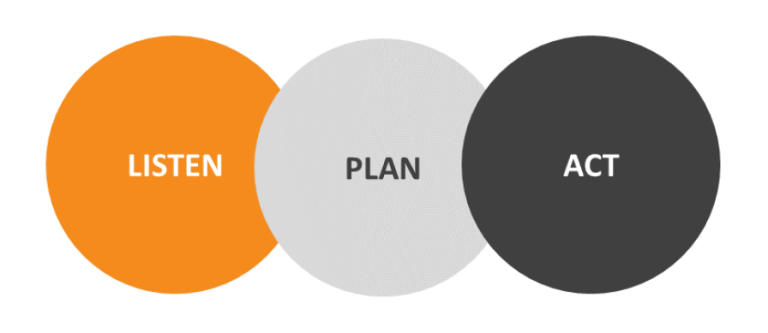
The phrase “Get closer than ever to your customers” is famously attributed to Steve Jobs. This often-repeated mantra remains a key principle of CX in both Consumer and B2B companies. The benefits of being close to your customers are enormous, yet why do so many B2B companies struggle to do it? Quite simply, it can be uncomfortable.
This relational challenge has been intensified with the decline of customer site visits and the normalisation of remote work. The great resignation puts further strain on maintaining and building business relationships.
An idea that helps to articulate this relational discomfort is “Proxemics”. Within the field of non-verbal communication, Proxemics helps to describe the study of space and how we use it, and how it makes us feel comfortable (or not).
The type and quality of relationship we have with someone often determines social distance and comfort level levels too. There is an interesting parallel here for B2B companies and customer relationships too.
As proxemics suggests, our customer closeness depends on the quality of our relationship.
People buy from people. Relationship health is the key ingredient for commercial success, particularly in business-to-business (B2B). At Deep-Insight we help B2B companies get closer to their customers by asking their customers about how they view the relational health their business relationship. But listening to what your customers have to say is only the start of becoming customer centric.
In the world of CX, it’s easy to get busy with the mechanics of running surveys, gathering scores and reporting results. Equal attention must be given to how you use the customer feedback as a platform to respond to your customers individually.
In all walks of life, relationships are far more enjoyable when they flow in both directions – reciprocity underpins healthy relationships.
When your customers share feedback, it gives you the perfect opportunity to pick up the phone to continue the conversation both about their immediate feedback, but also to talk about their concerns, what they hope for and how you might help them with their business goals.
If responding to a customer is as simple as picking up the phone, why do so few companies do it well?
We’ve summarised some typical responses to customer feedback below; it’s much easier to do the items on the left-hand side rather than to properly listen to your customer and agree with them about what you can do to improve your relationship with them.

If you do not respond at all to your customers, they’ll feel like their views are not valued, trust may diminish, and they’ll think twice before they give you feedback again.
You set the tone of the customer relationship by how you respond.

Open communication and reciprocity form the bedrock of relationships. If you want to get close to your customers, you’ll also need to let them get close to you too.
Proximity matters and it all hinges on the quality of your relationship.